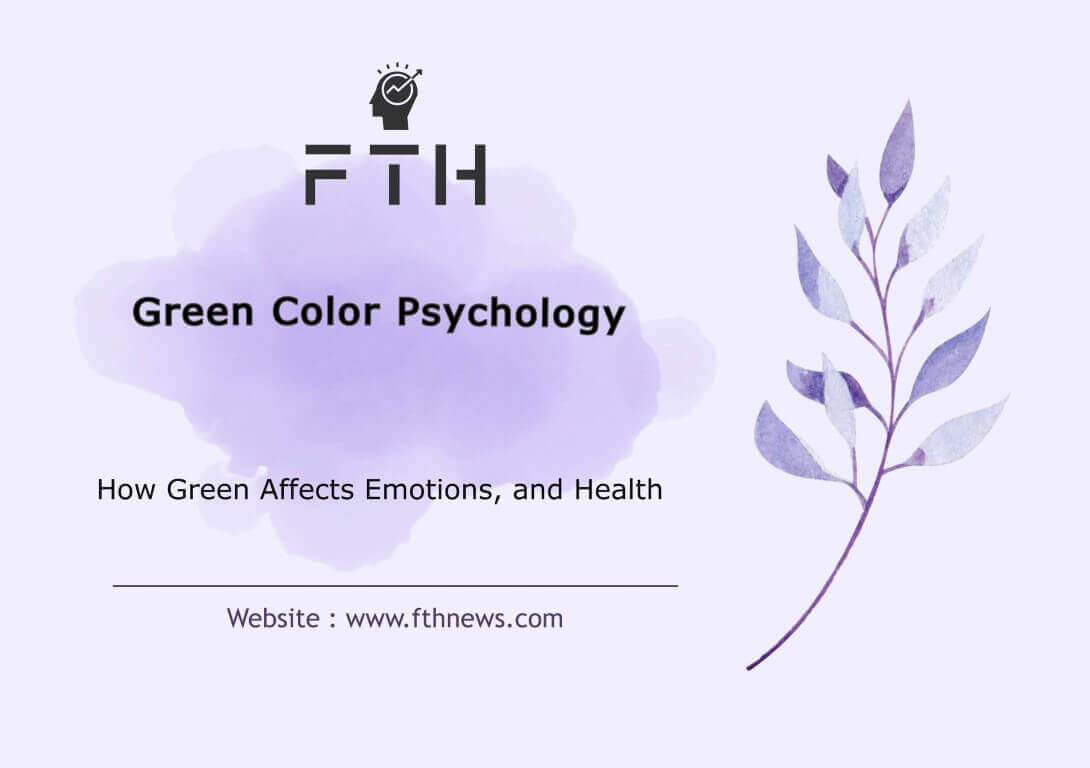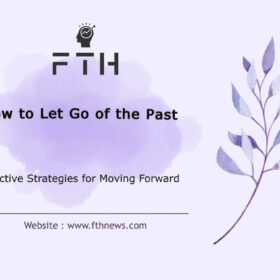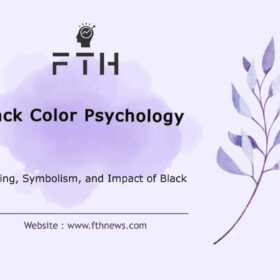
Green Color Psychology: Understanding the psychology of colors is essential in many fields, from marketing to interior design. Among the myriad of colors, green stands out as a particularly significant hue. Associated with nature, tranquility, and growth, green has a profound impact on human emotions and behaviors. This article delves into the psychology of green color, exploring its effects and applications in various domains.
The Meaning and Symbolism of Green Color
Green is universally recognized as the color of nature. It evokes the lushness of forests, the freshness of new leaves, and the fertility of fields. This intrinsic association with nature renders green a symbol of renewal, energy, and life. The color green also signifies balance, harmony, and stability, often linked to feelings of safety and security.
Green’s calming and refreshing attributes are deeply rooted in our collective psyche. This connection to the natural world is so strong that even a glimpse of green can trigger a sense of tranquility and relaxation. The presence of green in our environment is often a signal of health and well-being, as it suggests abundant resources and a safe habitat.
Cultural Contexts of Green Color
In cultural contexts, green can have different meanings:
- Western Cultures: In Western cultures, green is often associated with luck and prosperity. This is evident in traditions such as St. Patrick’s Day celebrations, where green is the dominant color symbolizing luck and good fortune. Additionally, financial symbols like the dollar bill use green to convey wealth and stability.
- Eastern Cultures: In many Eastern cultures, green symbolizes fertility, new beginnings, and growth. It is a color that represents life and rejuvenation, often used in celebrations and rituals that emphasize renewal and prosperity.
- Historical Significance: Historically, before the 16th century, green pigments were derived from natural sources like berries and plants. These natural dyes often faded over time. However, with the advent of artificial green pigments in the 18th century, green became more vibrant and long-lasting, expanding its use in art, fashion, and design.
Symbolic Associations of Green Color
- Nature and Environment: Green’s strongest association is with nature and the environment. It symbolizes life, growth, and renewal, mirroring the cycles of the natural world. This is why green is a predominant color in eco-friendly and sustainable initiatives.
- Health and Healing: Green is also a symbol of health and healing. It is frequently used in healthcare settings to create a soothing and healing environment. The color’s association with fresh, leafy greens reinforces its link to health and wellness.
- Money and Prosperity: In financial contexts, green is synonymous with money and wealth. The color’s use in currency, particularly the U.S. dollar, has cemented its association with economic prosperity and financial stability.
- Emotional Balance: Psychologically, green represents balance and harmony. It is believed to have a calming effect on the mind and body, reducing stress and anxiety. This makes it a popular choice in spaces designed for relaxation and reflection.
- Jealousy and Envy: On the flip side, green can also symbolize jealousy and envy. The phrase “green with envy” highlights this aspect, suggesting a complex emotional relationship with the color.
The Spectrum of Green Color
Green encompasses a wide spectrum of shades, each with its own unique symbolism:
- Light Green: Symbolizes peace of mind, nature, and youth.
- Dark Green: Represents stability, growth, and a favorable economic situation.
- Emerald Green: Conveys richness and luxury.
- Olive Green: Associated with peace and wisdom.
The diverse shades of green provide a range of options for designers and marketers to evoke specific emotions and responses.
Green’s multifaceted symbolism and psychological effects make it a powerful color in various fields. Whether it’s creating a calming environment, symbolizing growth and prosperity, or promoting health and wellness, green has a profound impact on our emotions and perceptions. Understanding the meaning and symbolism of green can help us harness its potential to enhance our lives and surroundings.
Psychological Effects of Green Color
Green Color Psychology: Calming and Refreshing
One of the most prominent psychological effects of green is its calming influence. Green has been shown to reduce stress and anxiety, promoting a sense of calm and relaxation. This is why green is often used in spaces designed for rest and rejuvenation, such as bedrooms, spas, and even meditation rooms. The color green creates an environment conducive to tranquility, helping individuals unwind and feel at ease.
Studies have demonstrated that exposure to green can lower heart rates and reduce blood pressure, making it an ideal color for environments where calmness and concentration are desired. This calming effect extends to schools and workplaces, where incorporating green can enhance focus, productivity, and overall well-being. For instance, classrooms with green elements can help students concentrate better, while offices with green decor can reduce employee stress and increase job satisfaction.
Green Color Psychology: Promoting Healing
Green is also strongly associated with healing and wellness. In healthcare settings, green is used to create a soothing environment for patients. The presence of green plants in hospitals has been linked to faster recovery times and improved mental health among patients. This healing aspect of green is rooted in its connection to nature and the outdoors, where people naturally feel more at ease. The concept of “biophilia,” which suggests that humans have an innate tendency to seek connections with nature, supports the use of green in healing environments.
Additionally, the practice of “forest bathing” in Japan, known as “shinrin-yoku,” involves immersing oneself in a forest environment to experience its therapeutic benefits. This practice has been shown to lower stress levels, enhance mood, and improve overall health, further underscoring the healing power of green.
Green Color Psychology: Stimulating Growth and Renewal
Green’s connection to growth and renewal is both literal and figurative. It is the color of new beginnings, symbolizing personal growth, transformation, and the flourishing of ideas and ambitions. This symbolism makes green a powerful choice for brands and products that promote health, wellness, and sustainability. Companies that focus on environmental conservation, organic products, and holistic wellness often use green in their branding to convey these values.
In interior design, green can create a sense of renewal and freshness, making spaces feel more vibrant and alive. This is why green is often used in areas where rejuvenation and renewal are desired, such as living rooms, kitchens, and outdoor spaces.
Green Color Psychology: Green and Optimism
Color affects not only our emotions but also our memories. Research has shown that participants are more likely to remember positive words written in green, leading researchers to theorize that green has more positive emotional connotations. This suggests that green may induce an optimism bias when recalling information, helping individuals remember positive experiences and feelings more vividly. This effect can be particularly beneficial in environments where a positive outlook is encouraged, such as counseling centers, educational settings, and workplaces focused on innovation and creativity.
Green Color Psychology: Green and Jealousy
Interestingly, while green is associated with many positive emotions, it can also represent jealousy. The phrase “green with envy” highlights this duality, showcasing green’s complexity in the psychological realm. This association with jealousy likely stems from historical and literary references, where green has been used to depict feelings of envy and covetousness. Despite this negative connotation, the overall impact of green remains predominantly positive, influencing emotions and behaviors in a beneficial manner.
The psychological effects of green are diverse and impactful, making it a powerful color in various contexts. Its calming, healing, and growth-promoting properties enhance environments, promote well-being, and influence behaviors in meaningful ways. Whether used in interior design, branding, or personal spaces, green can foster a sense of peace, renewal, and optimism. Embracing the psychological benefits of green allows us to create spaces and experiences that resonate with our natural inclinations and enhance our quality of life.
Applications of Green Color in Interior Design
In interior design, green is a versatile and transformative color that can significantly alter the ambiance of a space. Light green shades can make a room feel more spacious and airy, providing a fresh and uplifting atmosphere. These lighter tones are ideal for smaller rooms or areas that need to feel open and inviting. On the other hand, darker greens add depth, richness, and a sense of coziness, making them suitable for larger spaces or rooms intended for relaxation and contemplation.
Designers often use green to create a connection with the natural world, making spaces feel more inviting and comfortable. This biophilic approach leverages green to evoke feelings of being in nature, which can enhance psychological well-being. Incorporating plants and botanical prints is a popular way to bring green into interior design, contributing to the overall aesthetic and creating a soothing environment. Whether used in paint, furnishings, or accessories, green can make interiors feel more harmonious and balanced.
Applications of Green Color in Marketing and Branding
In marketing, green is employed to convey messages of health, eco-friendliness, and tranquility. Brands that focus on sustainability and natural products often use green in their logos and packaging to reinforce their commitment to the environment. For instance, companies like Whole Foods and Starbucks utilize green to emphasize their dedication to natural, high-quality products and sustainable practices.
The psychological impact of green can also be leveraged in advertising. Green is effective in creating a sense of calm and trust, making it a valuable tool for brands seeking to build strong, positive relationships with their customers. This calming effect can encourage consumer loyalty and enhance brand perception. Additionally, green’s association with renewal and growth makes it an ideal choice for companies looking to position themselves as forward-thinking and innovative.
Applications of Green Color in Fashion
In fashion, green is a bold yet versatile color that can convey a range of emotions and styles. Depending on the shade and how it is used, green clothing can be both soothing and striking. Lighter greens can symbolize freshness and growth, aligning with themes of renewal and well-being. These shades are often used in spring and summer collections to evoke a sense of vitality and rejuvenation.
Darker greens, such as emerald and forest green, can add a touch of elegance and sophistication to an outfit. These shades are perfect for creating statement pieces that exude confidence and poise. Fashion designers use green to evoke feelings of connection to nature and environmental consciousness, often integrating it into eco-friendly and sustainable collections. Green’s versatility allows it to be used in a variety of contexts, from casual wear to high fashion, making it a staple in the fashion industry.
Green’s application in design and marketing is vast and impactful. Understanding the diverse applications of green allows designers, marketers, and fashion professionals to harness its full potential, creating environments, brands, and products that resonate with consumers on multiple levels.
Historical Context of Green Color
The history of green pigments is as rich and varied as the color itself. Before the 16th century, green pigments were derived from natural sources such as the berries of fern, plantain, and buckthorn trees. These natural dyes, while initially vibrant, were prone to fading over time. The impermanence of these early green pigments posed challenges for artists and craftsmen who sought lasting vibrancy in their work.
Ancient and Medieval Periods
In ancient times, green was a difficult color to produce. Early civilizations like the Egyptians and Romans experimented with various minerals to create green pigments. One of the earliest known green pigments was “Egyptian green,” made from copper compounds. However, these pigments often contained toxic elements, limiting their use.
During the medieval period, the quest for stable green pigments continued. Verdigris, a pigment made by corroding copper, was widely used despite its tendency to darken over time. Another common pigment was “terre verte” or green earth, made from iron silicate minerals. This natural pigment was more stable but lacked the vividness of synthetic pigments developed later.
The Renaissance and the Quest for Vibrancy
The Renaissance era saw significant advancements in the production and application of green pigments. Artists like Leonardo da Vinci and Michelangelo sought out more vibrant and stable greens for their masterpieces. They used a combination of natural minerals and experimental techniques to achieve the desired hues, often layering different pigments to create depth and vibrancy.
However, it was not until the 18th century that a major breakthrough occurred. The invention of artificial green pigments revolutionized the use of green in art and design. One of the most significant developments was the creation of “Scheele’s Green” in 1775 by Swedish chemist Carl Wilhelm Scheele. This bright, arsenic-based pigment was both vibrant and affordable, quickly becoming popular in wallpapers, fabrics, and paintings.
19th Century: Innovation and Toxicity
The 19th century saw further innovation with the introduction of “Paris Green” (also known as “emerald green” or “Schweinfurt green”). This pigment, developed in 1814, was even brighter and more durable than its predecessors. However, like Scheele’s Green, it contained arsenic, making it highly toxic. Despite its dangers, Paris Green was used extensively in the arts, interior design, and even as a pesticide.
Modern Era: Safe and Sustainable Greens
The 20th century brought advancements in chemistry that allowed for the production of safe and non-toxic green pigments. Synthetic organic pigments, such as phthalocyanine green, offered intense, stable colors without the health risks associated with earlier pigments. These modern pigments are used in a wide range of applications, from fine art to industrial design, ensuring that the color green remains a staple in our visual landscape.
Green in Cultural and Symbolic Contexts
Throughout history, green has held significant cultural and symbolic meanings. In medieval Europe, green was associated with the natural world and fertility. It was also the color of the robes of merchants and bankers, symbolizing wealth and prosperity. In Islamic cultures, green is considered a sacred color, representing paradise and eternal life.
The evolution of green pigments reflects broader historical and technological changes, illustrating the ongoing human quest to capture and preserve the beauty of nature. Today, green continues to be a color of immense importance, symbolizing everything from ecological awareness to economic growth.
From its early origins in natural dyes to the invention of synthetic pigments, the history of green is a testament to human ingenuity and creativity. The advancements in green pigments have not only enriched the arts but have also influenced cultural and symbolic meanings across civilizations. Understanding this historical context allows us to appreciate the depth and complexity of green, a color that continues to captivate and inspire.
The Effects of Green color on Health
Green symbolizes health and vitality, and its presence can have significant positive effects on people’s physical and mental well-being. Numerous studies and practices underscore the health benefits associated with being surrounded by the color green.
Psychological Health Benefits
Research consistently shows that green environments contribute to improved mental health. One of the most compelling examples is the Japanese practice of “forest bathing,” or “shinrin-yoku.” This involves immersing oneself in a forest environment, which has been shown to reduce blood pressure, lower cortisol levels (the hormone associated with stress), and improve mood. Participants in forest bathing report feeling more relaxed and rejuvenated, highlighting the profound impact green nature can have on our psyche.
Additionally, exposure to green spaces has been linked to reduced anxiety and depression. Urban residents with access to green spaces experience fewer symptoms of mental health disorders compared to those without such access. This is partly because green environments encourage physical activity, social interaction, and provide a calming escape from the hustle and bustle of urban life.
Physical Health Benefits
The benefits of green extend beyond mental health to encompass physical health improvements. Studies have shown that hospital patients with views of green landscapes recover faster and require less pain medication than those without such views. The presence of plants in indoor environments can also improve air quality by reducing pollutants and increasing oxygen levels, contributing to overall health.
Green environments promote physical activity, which is crucial for maintaining physical health. Parks and green trails encourage walking, running, and other forms of exercise, which are essential for cardiovascular health, weight management, and overall physical fitness.
Healing and Recovery
The color green is frequently used in healthcare settings to create a soothing and healing environment. Green hues in hospital rooms, waiting areas, and therapy spaces can reduce anxiety and promote a sense of calm. The psychological association of green with nature and life helps patients feel more relaxed and hopeful, which can positively influence their recovery process.
Biophilia and Human Health
The concept of biophilia, which refers to the innate human connection to nature, explains why green spaces are so beneficial. Humans have evolved to thrive in natural environments, and modern lifestyles often disconnect us from these settings. Reintroducing green elements into our daily lives, whether through indoor plants, community gardens, or nature walks, can restore this connection and enhance our well-being.
Green is more than just a color; it is a symbol of health and vitality with tangible benefits for both psychological and physical health. Practices like forest bathing illustrate the profound impact that green environments can have, from reducing stress to promoting faster recovery. Incorporating green into our surroundings, whether through nature exposure or interior design, can significantly enhance our overall well-being. Understanding and leveraging the health benefits of green can lead to healthier, happier lives.
Conclusion
Green Color Psychology: The psychology of green color is a fascinating study of how a single hue can influence our emotions, behaviors, and decisions. Its calming, healing, and growth-promoting properties make it a powerful tool in various fields, from interior design to marketing. By understanding and harnessing the psychological effects of green, we can create environments and products that promote well-being and resonate with our natural inclinations.
Incorporating green into your life, whether through your surroundings, your wardrobe, or your brand, can foster a sense of peace, renewal, and harmony. Embrace the power of green and discover the profound impact this versatile color can have on your world.














